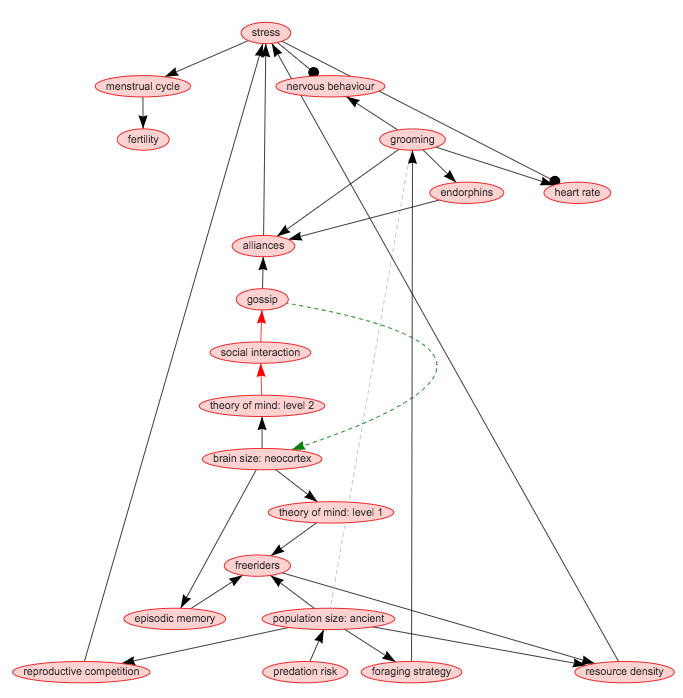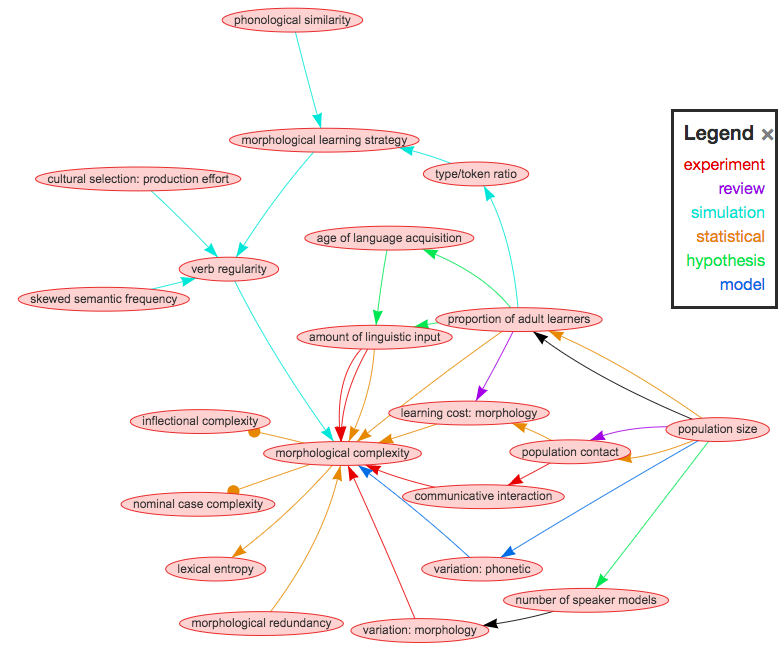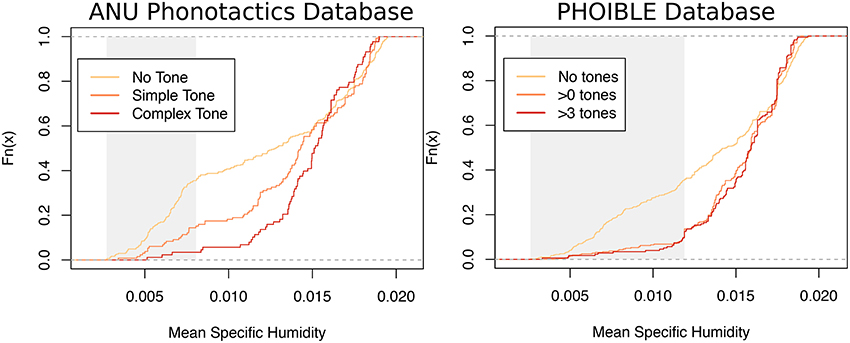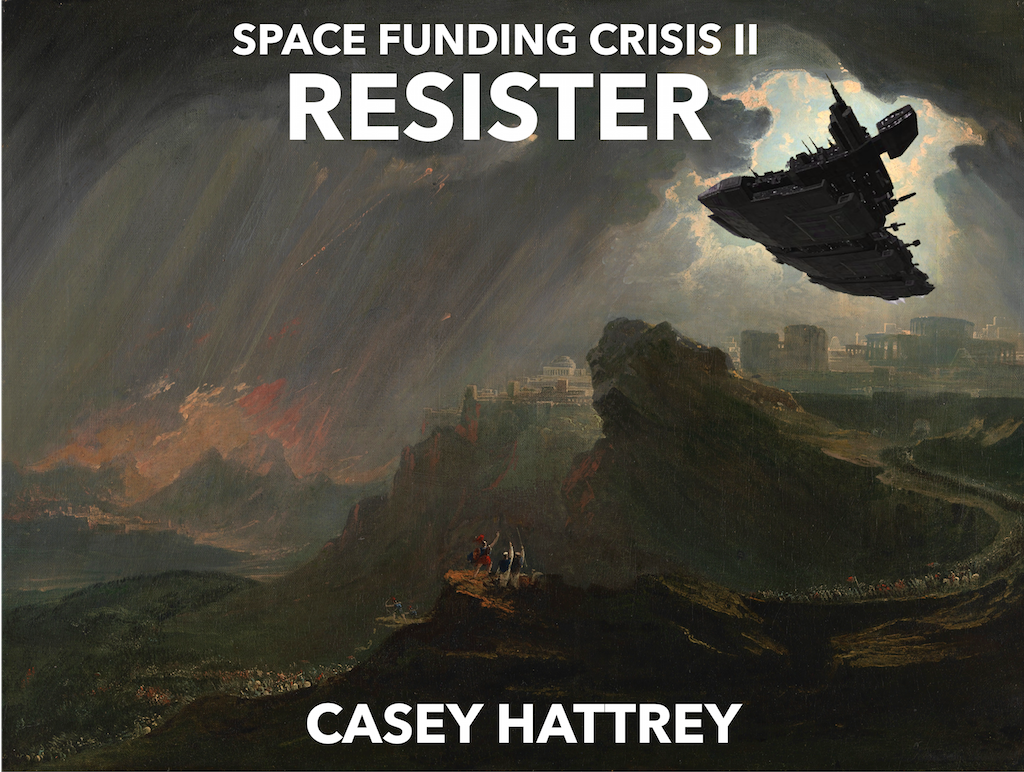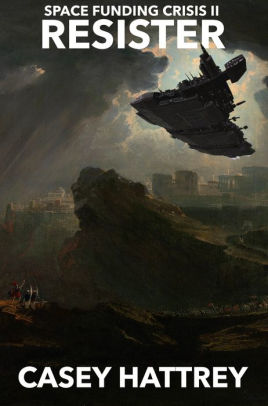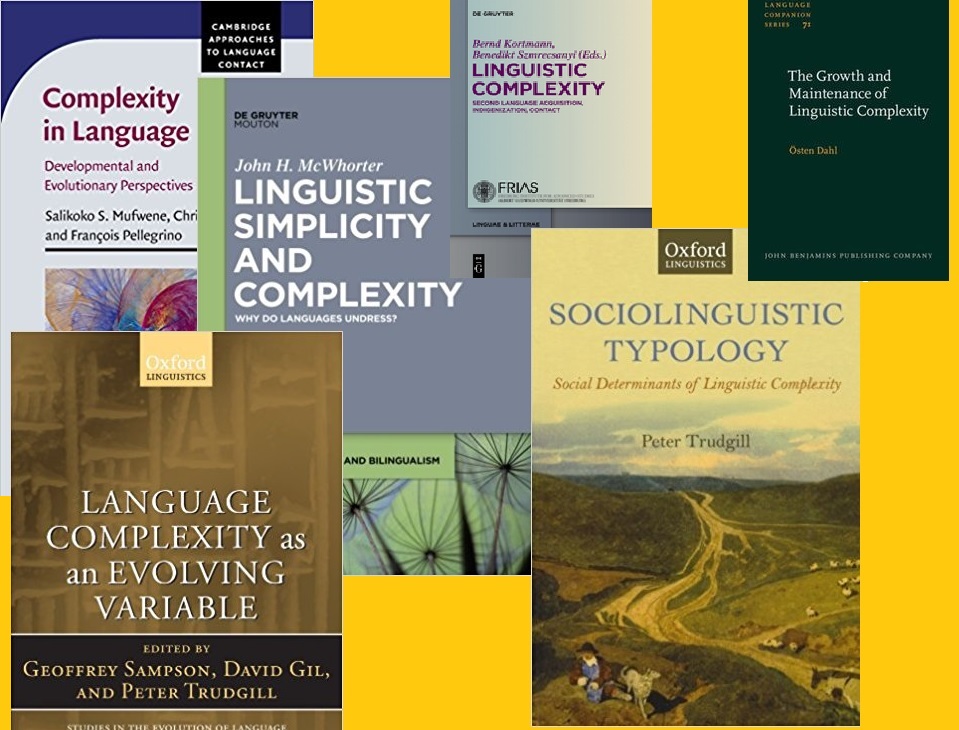A couple of months ago, Peeter Tinits, Jonas Nölle and I organized a theme session with the fairly generic title “New directions in language evolution research” at the SLE conference in Tartu. Now we are planning a Special Issue of the journal “Language Dynamics and Change” (LDC) that covers the topics addressed at the workshop (and perhaps a few more). Our goal is to emphasize the “New Directions” aspect, i.e. to gather really innovative approaches to the evolution of language. We would like to open up the CfP beyond the circle of workshop participants – so everybody interested is invited to submit an abstract, on the basis of which we will make a first selection and invite full papers. Note that if we can’t include your paper in the Special Issue, you can of course still submit it as a regular paper to LDC. If you are interested in contributing, please send an abstract to newdir.langev@gmail.com until December 15th.
Here’s the description of our theme session again:
Research on language evolution is undoubtedly among the fastest-growing topics in linguistics. This is not a coincidence: While scholars have always been interested in the origin and evolution of language, it is only now that many questions can be addressed empirically drawing on a wealth of data and a multitude of methodological approaches developed in the different disciplines that try to find answers to what has been called “the hardest problem in science” (Christiansen & Kirby 2003). Importantly, any theory of how language may have emerged requires a solid understanding of how language and other communication systems work. As such, the questions in language evolution research are manifold and interface in multiple ways with key open questions in historical and theoretical linguistics: What exactly makes human language unique compared to animal communication systems? How do cognition, communication and transmission shape grammar? Which factors can explain linguistic diversity? How and why do languages change? To what extent is thestructure of language(s) shaped by extra-linguistic, environmental factors?
Over the last 20 years or so, evolutionary linguistics has set out to find answers to these and many more questions. As, e.g., Dediu & De Boer (2016) have noted, the field of language evolution research is currently coming of age, and it has developed a rich toolkit of widely-adopted methods both for comparative research, which investigates the commonalities and differences between human language and animal communication systems, and for studying the cumulative cultural evolution of sign systems in experimental settings, including both computational and behavioral approaches (see e.g. Tallerman & Gibson 2012; Fitch 2017). In addition, large-scale typological studies have gained importance in recent research on language evolution (e.g. Evans 2010).
The goal of this workshop is to discuss innovative theoretical and methodological approaches that go beyond the current state of the art by proposing and empirically testing new hypotheses, by developing new or refining existing methods for thestudy of language evolution, and/or by reinterpreting the available evidence inthe light of innovative theoretical frameworks. In this vein, our workshop aims at bringing together researchers from multiple disciplines and theoretical backgrounds to discuss the latest developments in language evolution research. Topics include
– experimental approaches investigating the emergence and/or development of sign systems in frameworks such as experimental semiotics (e.g. Galantucci & Garrod 2010) or artificial language learning (e.g. Kirby et al. 2014);
– empirical research on non-human communication systems as well as comparative research on animal cognition with respect to its relevance for the evolution of cognitive prerequisites for fully-fledged human language (Kirby 2017);
– approaches using computational modelling and robotics (Steels 2011) in order to investigate problems like the grounding of symbol systems in non-symbolic representations (Harnad 1990), the emergence of the particular features that make human language unique (Kirby2017, Smith 2014), or the question to what extent these features are domain-specific, i.e. evolved by natural selection for a specifically linguistic function (Culbertson & Kirby 2016);
– research that explicitly combines expertise from multiple different disciplines, e.g. typology and neurolinguistics (Bickel et al. 2015); genomics, archaeology, and linguistics (Pakendorf 2014, Theofanopoulou et al. 2017); comparative biology and philosophy of language (Moore 2016); and many more.
This latter trend to cross disciplinary boundaries is also evident in the proposed workshop contributions listed below. For instance, many of them approach long-standing questions from historical-typological linguistics from an evolutionary point of view by combining analyses of large typological databases with computational modelling, focusing on the emergence of (near-)universal patterns or the much-discussed topic of a potential connection between group size andlinguistic complexity. Others draw on insights from biology to discuss how thehuman capacity for language came about. What all have in common, however, is that they combine multiple perspectives to shed new light on the question of how language evolved and continues to evolve.
References
Bickel, Balthasar, Alena Witzlack-Makarevich, Kamal K. Choudhary,Matthias Schlesewsky & Ina Bornkessel-Schlesewsky. 2015. TheNeurophysiology of Language Processing Shapes the Evolution of Grammar:Evidence from Case Marking. PLOS ONE 10(8). e0132819.
Christiansen, Morten H. & Simon Kirby. 2003. Language Evolution:The Hardest Problem in Science. In Morten H. Christiansen & Simon Kirby(eds.), Language Evolution, 1–15.(Oxford Studies in the Evolution of Language 3). Oxford: Oxford UniversityPress.
Culbertson, Jennifer & Simon Kirby. 2016. Simplicity andSpecificity in Language: Domain-General Biases Have Domain-Specific Effects. Frontiers in Psychology 6.doi:10.3389/fpsyg.2015.01964.
Dediu, Dan & Bart de Boer. 2016. Language evolution needs its ownjournal. Journal of Language Evolution1(1). 1–6.
Evans, Nicholas. 2010. Language diversity as a tool for understandingcultural evolution. In Peter J. Richerson & Morten H. Christiansen (eds.),Cultural Evolution : Society, Technology, Language, and Religion, 233–268.Cambridge: MIT Press.
Fitch, W. Tecumseh. 2017. Empirical approaches to the study of languageevolution. Psychonomic Bulletin &Review 24(1). 3–33.
Galantucci, Bruno & Simon Garrod. 2010. Experimental Semiotics: Anew approach for studying the emergence and the evolution of humancommunication. Interaction Studies11(1). 1–13.
Harnad, Stevan. 1990. The symbol grounding problem. Physica D 42. 335–346.
Kirby, Simon, Tom Griffiths & Kenny Smith. 2014. Iterated Learningand the Evolution of Language. CurrentOpinion in Neurobiology 28. 108–114.
Kirby, Simon. 2017. Culture and biology in the origins of linguisticstructure. Psychonomic Bulletin &Review 24(1). 118–137.
Moore, Richard. 2016. Meaning and ostension in great ape gesturalcommunication. Animal Cognition19(1). 223–231.
Pakendorf, Brigitte. 2014. Coevolution of languages and genes. Current Opinion in Genetics &Development 29. 39–44.
Smith, Andrew D.M. 2014. Models of language evolution and change:Language evolution and change. WileyInterdisciplinary Reviews: Cognitive Science 5(3). 281–293.
Steels, Luc. 2011. Modeling the Cultural Evolution of Language. Physics of Life Reviews 8. 339–356.
Tallerman, Maggie & Kathleen R. Gibson (eds.). 2012. The Oxford Handbook of Language Evolution.Oxford: Oxford University Press.
Theofanopoulou, Constantina, Simone Gastaldon, Thomas O’Rourke, Bridget D. Samuels, Angela Messner, Pedro Tiago Martins, Francesco Delogu, Saleh Alamri& Cedric Boeckx. 2017. Self-domestication in Homo sapiens: Insights fromcomparative genomics. PLOS ONE12(10). e0185306.

